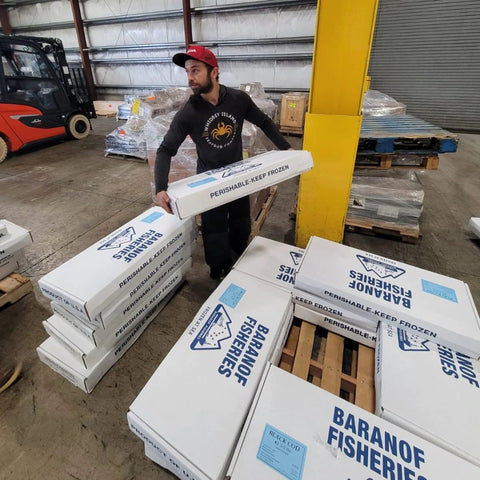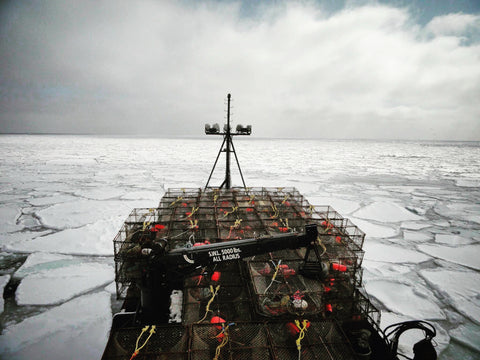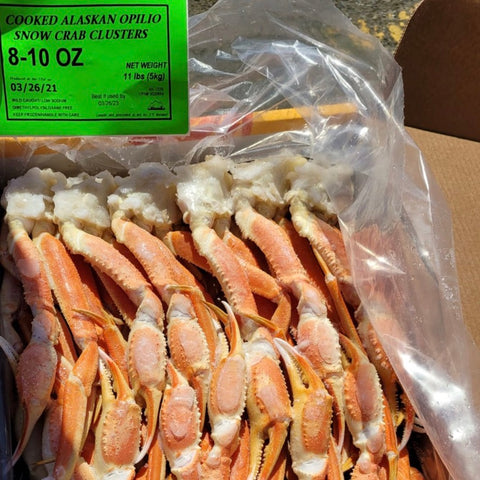Dirtiest Catch - Differences Between Sustainable and Unsustainable Harvesting Methods

Sustainably caught. That is the phrase that is marketed and advertised from everyone and anyone who is selling seafood. The fact is, that it typically is not true. “Sustainability” is a buzzword that consumers look for when purchasing seafood products. So, where’s the proof? Consumers need to consider methods of harvesting, using sustainability and environmentally friendly practices.
That said, there are many different ways to harvest commercial seafood. The best harvesting methods do not damage sea floors and corals. They also are very clean, meaning they catch their target species and not other sea life referred to as by-catch.
3 sustainable harvesting methods
The most clean and sea friendly method is troll caught. Mostly used commercially for Tuna and Salmon species, this harvesting method is one hook per line. Each fish is caught one at a time, still fresh and very alive when brought on the vessel leading to premium quality.
Pot fishing is also very clean and efficient at catching targeted species like Crab and Black Cod. Very little bycatch and seafloor friendly.
Bottom long-lining is the next tier down when it comes to efficiency and sea floor friendly. Baited hooks run along the bottom. There can be a little more bycatch with this method. All fish that come up very alive, with most being the target species with bycatch being thrown back over, alive.
Methods to not support
By far the least sustainable, dirty and destructive fishery is trawling and purse seining. Purse seining is used mostly in pelagic waters outside the U.S. wrapping up massive schools of tuna and whatever else is around including dolphins. Like most fisheries outside the US most of this is unmonitored, unrecorded and unregulated making it destructive to the ocean environment and unsuitable.
Trawling, which is a harvesting method used in Alaska and all over the United States, is by far the dirtiest and most destructive harvesting method. Species like Pollock, Rockfish and Pacific Cod are harvested this way. These boats from 80ft to over 300ft tow massive nets along the bottom hauling up 30 tons to 150 tons of fish and whatever is in the path of the net.
Fisheries that use trawling methods might catch their targeted species, but conversely destroy the seafloor - dragging up corals and sea plant life that help oxygenate the water. They also grab all sorts of species of sea life. All this is hauled up, smashed in the net and dead. That includes seals and porpoises that get trapped as well. Everything that is not a target species or is not supposed to be harvested like Chinook Salmon, Crab species and Halibut all get dumped over the side dead. Pure waste.
The Alaskan trawling fleet has single handedly destroyed Alaskan Red King crab fisheries making the first closed season in 25 years coming in 2022. They are also responsible for massive reduction in the Alaskan Bairdi and Opilio crab with quota cuts of 88% in 2022.
This has a huge economic impact for the entire commercial fishing industry, especially those men and women that financially depend on the Alaska Crab harvest.
Trawlers have also lent a leading hand in destroying the Pacific King Salmon population, both in Alaska and the Washington coast. They continue to destroy other delicate species like Black Cod and Pacific Halibut with massive amounts destroyed in their nets every year.
How does this lead to sustainability? How is that good for the marine environment? How long can these species be harvested in this way until they are completely wiped out?
We need change, help with that change.
As consumers you can help make a massive difference. Don't buy, eat or support seafood harvested by methods that are not sustainable. It’s one thing to want what's best for the environment. It’s another to demand it. Support sustainability by supporting harvesters making a positive impact and spreading the good word.


